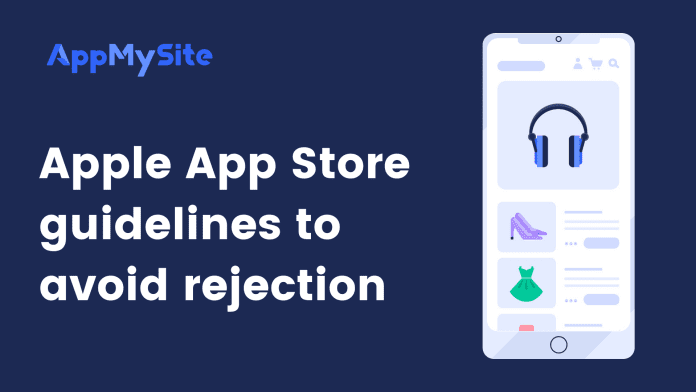Apple takes the review process of mobile apps very seriously. Each and every app is reviewed manually by experts from their team. We recommend understanding Apple’s review guidelines before you finally submit your app.
The two main reasons for app rejection are metadata and binary rejection. The following sections cover both these types of rejection in detail, and how you can avoid both:
Metadata Rejection
Most apps get rejected by Apple because of App Completeness. In simple words, the final version of your mobile app should include the certain necessary information to avoid rejection. If it does not, the app faces metadata rejection.
Read: Why did Apple reject my app?
You can avoid metadata rejection by focusing on the following points:
Hidden features: Disclose all features that are a part of your app, even if you have not documented it. Also, make sure you don’t include information on features that are not a part of your app.
Screenshots: Add high-resolution screenshots that depict your app accurately.
Previews: Create a high quality video to explain how your app works and what it offers. Include a voice-over and content to explain it too.
Category: Select an appropriate category for your app. This will not be a criteria for rejection as Apple can unilaterally change the category of your app.
App title & Subtitle: You can name your app in 30 characters. You will get another 30 characters to write your subtitle.
Content: Only include screenshots, previews, and content on your app that is appropriate for 4+ age.
Binary Rejection
Binary rejection generally happens on the grounds of certain issues with the functionality of your app. Getting your app approved if it is rejected under this category can be a little difficult as compared to Metadata rejection.
Binary rejection generally happens because of the following reasons:
Bugs: Make sure your app is bug-free. Apple Review must not be taken as a testing platform.
Broken links: There must be no broken links in your app. Conduct thorough testing to find broken links and fix them.
Request permission: Mobile apps that access other apps on the user’s device must ask for permission to access them. Add a prompt to get permission to access other apps on a device. You can configure app permission while creating your iOS and Android build in your AppMySite Account.
Interface: The interface of the app should be intelligible and easy to use.
App value: Your app must offer some value to the end user. Apps that have little to no functionality are rejected on these grounds.
Duplicity: If your app is a replica of any other app that already exists on the App Store, there are high chances of binary rejection.
Multiple apps of similar nature: Apps that are built around the same purpose and are submitted by the same developer account are often rejected. You can instead combine multiple apps to publish one that offers a one-window service to the end-user.

